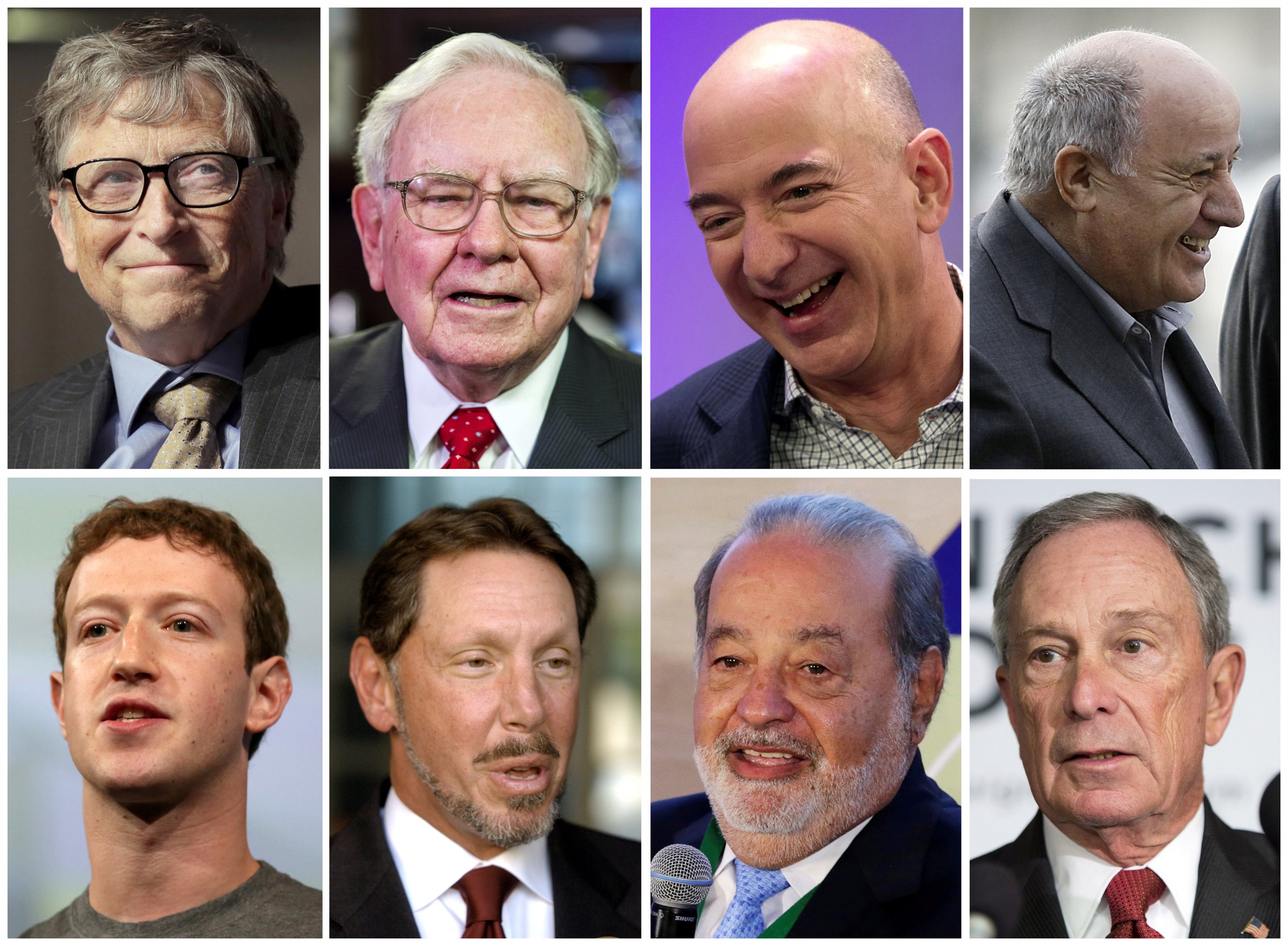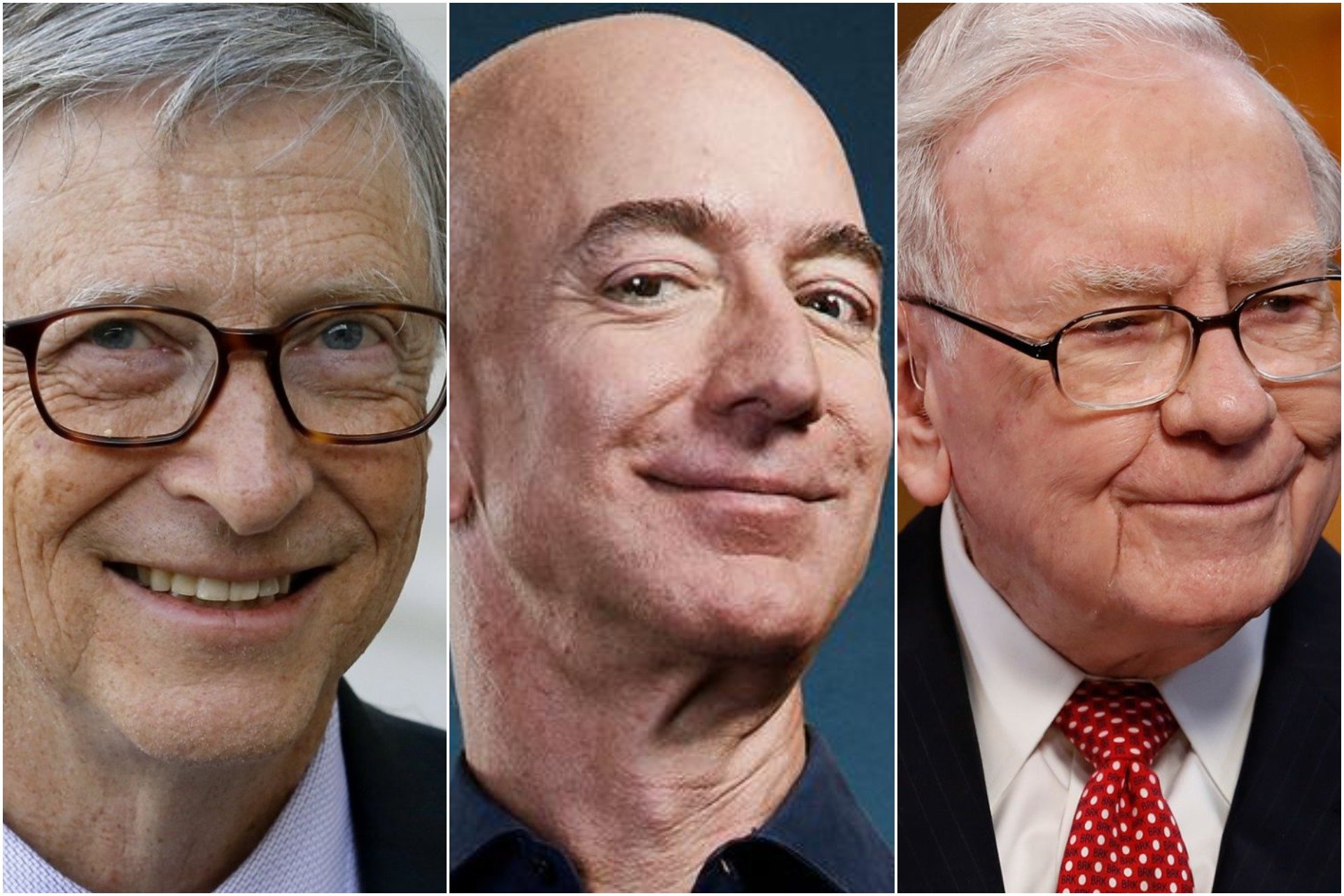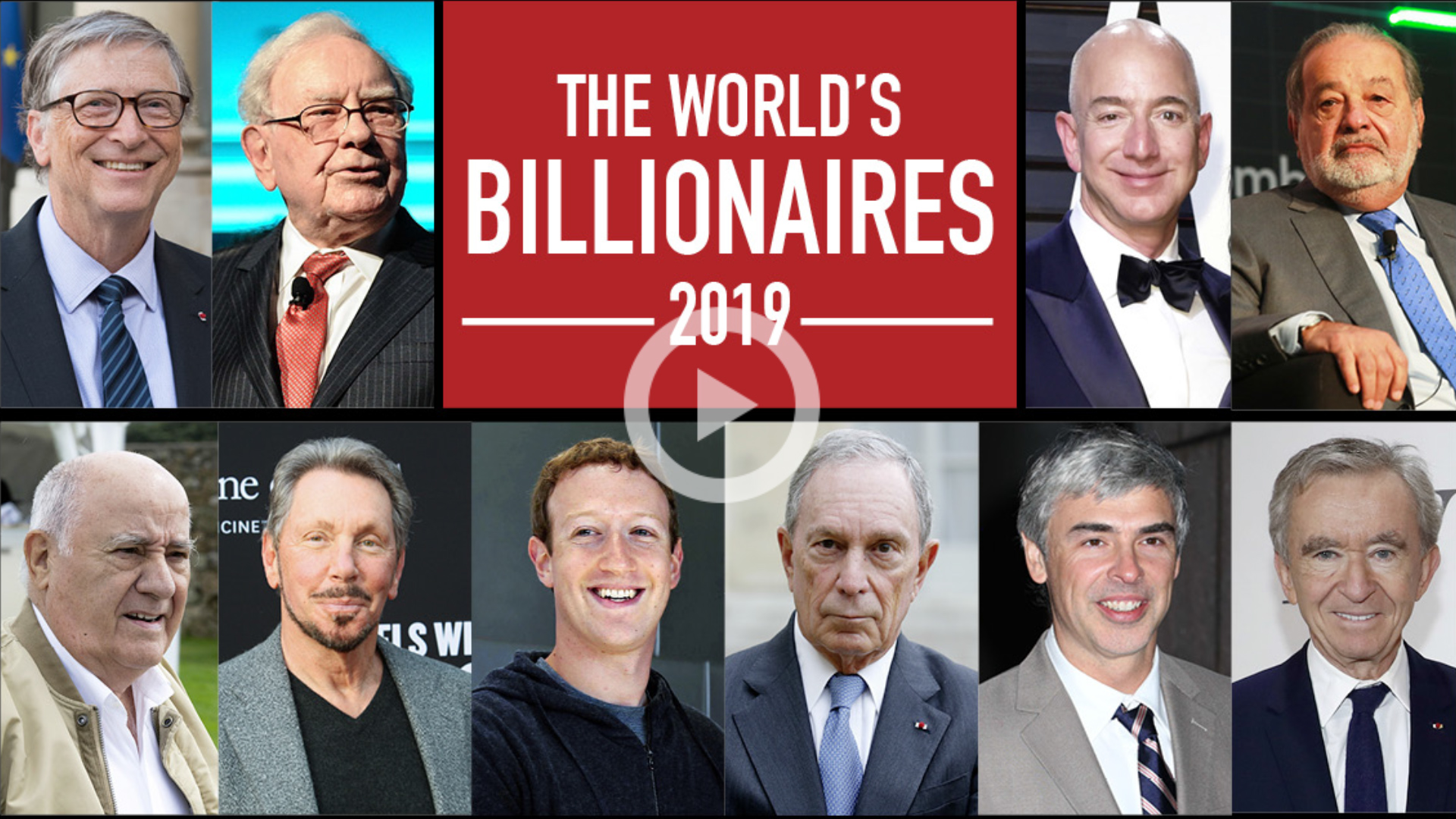Have you ever stopped to think about the sheer scale of wealth some people hold, and what that truly means for our world? It's a topic that, you know, often sparks a lot of conversation, and for good reason. From the towering skyscrapers they call home to the subtle ways their money shapes, well, everything around us, the lives of the ultra-rich are, in some respects, quite fascinating to consider. This discussion, which we're calling "Billionaires Gleb," aims to give us a closer look at these powerful figures and their influence.
We’re not talking about a specific person named Gleb here, just to be clear. Instead, "Billionaires Gleb" is a way for us to, you know, peek into the lives and impact of the very wealthy, using insights from everyday observations and discussions. It's about getting a better handle on the immense financial clout that, say, a handful of individuals possess, and how that plays out in places like New York City or even in broader economic currents. We'll explore some interesting points that come up when people talk about these fortunes.
As of late 2024, the presence of billionaires remains a hot topic, with conversations often touching on their properties, their business dealings, and even, you know, their perceived public image. We’ll be pulling from some real observations to shed light on these very rich people and the unique situations that often surround them. It's, like, a chance to really think about the bigger picture of wealth in society today.
Table of Contents
- The Iconic Homes of Billionaires Row
- The Perception of Wealth and Generations
- The Undercurrents of Influence: Dark Money and Big Business
- Cost of Living and Community Engagement
- Frequently Asked Questions About Billionaires Gleb
- Reflections on Wealth and Society
The Iconic Homes of Billionaires Row
When we talk about "Billionaires Gleb," one of the first things that often comes to mind is where these incredibly wealthy people actually live. New York City, particularly a stretch known as Billionaires Row, is, you know, a prime example of this. These buildings aren't just tall; they represent, like, the very peak of luxury and high-stakes real estate.
A Closer Look at 220 Central Park South
One of the best known buildings in Billionaires Row is 220 Central Park South. This place is, you know, quite famous for its stunning views and its incredibly high prices. It’s a spot where, apparently, some of the most influential people in the world have decided to make their homes. The design and location are, like, top-tier, making it a very desirable address for anyone with vast sums of money.
Interestingly, the building with the nine apartments we owned is 200 Central Park South. This suggests a pattern of significant investment in these very exclusive areas. Owning multiple units in such a high-value location really highlights the kind of capital that, you know, these billionaires are working with. It's not just about one fancy place; it’s about, well, accumulating a portfolio of them, sometimes even within the same building.
The Significance of Multiple Properties
The idea of owning several homes, perhaps six or even twelve houses, is something that, you know, often puzzles or even frustrates many people. It brings up questions about, like, how much is too much, and what that kind of ownership really means for housing markets and communities. For some, it just seems like, well, an incredible amount of property for one person or family to manage.
This kind of ownership also, you know, sparks discussions about the motivations behind it. Is it purely for investment, or is it about having a place in every desirable spot around the globe? It’s a very different way of living compared to, say, most people's experiences. The sheer number of properties can, you know, make people wonder about the responsibilities that come with such vast holdings.
The Perception of Wealth and Generations
When we look at "Billionaires Gleb," it’s not just about the money itself; it’s also about how people see it, especially across different age groups. There’s a great little video, apparently, that talks about how clueless the younger generation in NYC is, particularly when it comes to money and, you know, how things really work. This kind of observation, well, often points to a gap in understanding.
The idea that some very wealthy people might be seen as "whiny entitled billionaires" who own many houses is, you know, a strong sentiment for some. It raises questions about empathy and connection between different parts of society. Who do you agree with more on this? It’s a common debate, really, about whether immense wealth brings a certain kind of detachment from everyday struggles.
This gap in perception is, you know, quite important. It shapes public opinion and, well, how people feel about economic fairness. For some, the sheer amount of money and property seems, like, almost unbelievable, leading to feelings of frustration. It’s a discussion that, you know, probably won't go away any time soon, as long as there are such big differences in wealth.
The Undercurrents of Influence: Dark Money and Big Business
A big part of understanding "Billionaires Gleb" involves looking at the less visible ways wealth exerts its force. The concept of "dark money" is, you know, a very real thing that often gets discussed in these circles. It’s about funds that are hard to trace, which can have a big impact on, well, many different areas of life.
Dark Money and Its Origins
The idea that things are "all highly coordinated and orchestrated by dark money, much of it originating from billionaires," is a powerful statement. It suggests a level of influence that operates, you know, behind the scenes. This kind of money can, apparently, shape policies, public discourse, and even, well, what we see in the news. It’s a topic that, honestly, makes many people feel uneasy.
The origins of this money are, you know, quite important to consider. If a lot of it comes from billionaires, it raises questions about accountability and transparency. It’s, like, a way for powerful individuals to affect outcomes without their involvement being immediately obvious. This hidden influence is, you know, a concern for anyone interested in fair processes and public trust.
Financial Hubs Shifting
It's interesting to note how the financial business is, you know, more in Midtown now than on Wall Street. This shift, while subtle, really speaks to how the landscape of big money is always changing. Wall Street might still hold its iconic status, but the actual day-to-day operations and the people making the big financial decisions are, apparently, moving to new locations. This is, you know, a pretty big deal for how the city's economy functions.
This movement suggests that, you know, the centers of financial gravity are not fixed. As a business, yes, finance is still incredibly powerful, but its physical footprint, well, is evolving. This kind of change can, you know, affect everything from property values to where talent chooses to work. It’s a quiet but very real transformation in the world of big money.
The Case of Elon Musk
When we talk about billionaires and their influence, people like Elon Musk often come up. The idea that someone could make "as much money as he has made off the Trump administration" is, you know, a point of discussion for many. It raises questions about the connections between big business and politics, and whether those connections are, well, always beneficial for everyone.
The thought that Musk might have done anything for free is, apparently, seen as foolish by some. This perspective suggests a belief that in the world of high finance and big business, every move is, you know, calculated for a return on investment. It’s a very pragmatic view, really, that expects people to act in their own financial best interest. Musk make a nice return on his investment, which, you know, is typical for someone in his position.
This outlook highlights a certain cynicism, perhaps, about the motivations of the super-rich. It’s like, people just don't believe that such powerful figures would act without a clear financial benefit in mind. This kind of thinking is, you know, pretty common when discussing the actions of billionaires and their impact on the wider world.
Cost of Living and Community Engagement
Beyond the high-rises of Billionaires Row, it's also worth looking at other places where wealth, or the lack of it, plays a role. Woodstock, New York, for instance, has a detailed profile showing mean prices in 2023 at $684,431. The median gross rent in 2023 was, you know, $68,431. This gives us a glimpse into the cost of living outside the immediate billionaire bubble, but still in desirable areas.
The December 2024 cost of living index in such places can, you know, give us a broader picture of economic realities. While not directly about billionaires, these figures help to frame the immense difference between, say, average living costs and the luxury properties discussed earlier. It's a way to, well, put the extreme wealth of "Billionaires Gleb" into some kind of perspective.
On another note, the idea of community engagement is, you know, quite important. "Please register to post and access all features of our very popular forum," suggests a place where people can connect and share ideas. It is free and quick, which is, like, very inviting. The fact that "Over $68,000 in prizes has already been given out to active posters on our forum" shows a vibrant, active community, which is, you know, a nice contrast to the often-private world of billionaires.
This kind of forum allows for, well, open discussion about topics like wealth, real estate, and society. It's a place where different perspectives, like those on "whiny entitled billionaires," can be shared and debated. This sense of community and shared conversation is, you know, a valuable thing in a world that can sometimes feel very divided by economic status. You can learn more about economic data from reliable sources.
Frequently Asked Questions About Billionaires Gleb
Here are some common questions people often have when thinking about billionaires and their impact, a bit like what "Billionaires Gleb" helps us explore.
What is Billionaires Row in NYC?
Billionaires Row is a collection of ultra-luxury residential skyscrapers in Midtown Manhattan, New York City. These buildings are, you know, famous for their incredibly high prices, stunning views of Central Park, and the very wealthy people who live there. They represent, like, a concentration of extreme wealth in one small area.
How do billionaires influence society?
Billionaires influence society in many ways, sometimes very openly and sometimes, you know, through less visible channels like "dark money." They can affect politics, shape industries, fund various initiatives, and even, well, set trends in luxury living. Their decisions, honestly, often have wide-reaching effects on economies and communities.
Is it common for billionaires to own multiple homes?
Yes, it's actually quite common for billionaires to own multiple properties, sometimes even several homes in different cities or countries. This can be for investment, for convenience when traveling, or simply because they have the means to do so. It's, like, a notable characteristic of extreme wealth.
Reflections on Wealth and Society
As we've, you know, taken this look at "Billionaires Gleb," it becomes pretty clear that the world of the super-rich is incredibly complex and, well, often sparks strong feelings. From the towering luxury apartments on Billionaires Row to the subtle ways "dark money" can influence events, the impact of these fortunes is, like, all around us. It's a topic that, you know, encourages us to think about how wealth is distributed and its effects on our communities.
The discussions around wealth, whether it's about who owns how many homes or the perceived "cluelessness" of younger generations, show that people have very different views. It's a constant conversation, really, about fairness, opportunity, and the role of money in shaping our lives. We’ve touched on how financial centers are shifting and how figures like Elon Musk operate, which, you know, adds more layers to the picture.
Ultimately, understanding "Billionaires Gleb" means looking at these different facets of extreme wealth. It's about recognizing the sheer scale of it, the places it calls home, and the sometimes hidden ways it operates. This exploration helps us, you know, better grasp the dynamics of wealth in our modern world and, well, how it touches us all. Learn more about economic trends on our site, and for more insights into high-end property markets, link to this page.



Detail Author:
- Name : Mr. Jarrell Little
- Username : alia.huel
- Email : chester.halvorson@murazik.com
- Birthdate : 1995-06-26
- Address : 4788 Chelsie Walk Suite 993 North Dell, TN 51244
- Phone : +13148898716
- Company : Metz and Sons
- Job : Urban Planner
- Bio : Cum non eveniet aliquid accusamus debitis. Nostrum quia ex nostrum in consequuntur quo hic. Ex minima sed adipisci eum possimus.
Socials
tiktok:
- url : https://tiktok.com/@amira_hodkiewicz
- username : amira_hodkiewicz
- bio : Nulla sed temporibus aliquam totam magnam corporis reprehenderit.
- followers : 5284
- following : 2038
twitter:
- url : https://twitter.com/hodkiewicza
- username : hodkiewicza
- bio : Sed ut veritatis aut. Aliquam et ad deserunt blanditiis. Natus voluptatibus quo modi officiis.
- followers : 2683
- following : 2375
instagram:
- url : https://instagram.com/amira6419
- username : amira6419
- bio : Ipsa eaque totam vel dicta eos dolore. Quis maiores similique nam maxime est.
- followers : 5096
- following : 348
facebook:
- url : https://facebook.com/amira.hodkiewicz
- username : amira.hodkiewicz
- bio : Ut voluptas quia incidunt perferendis necessitatibus eum.
- followers : 859
- following : 1526